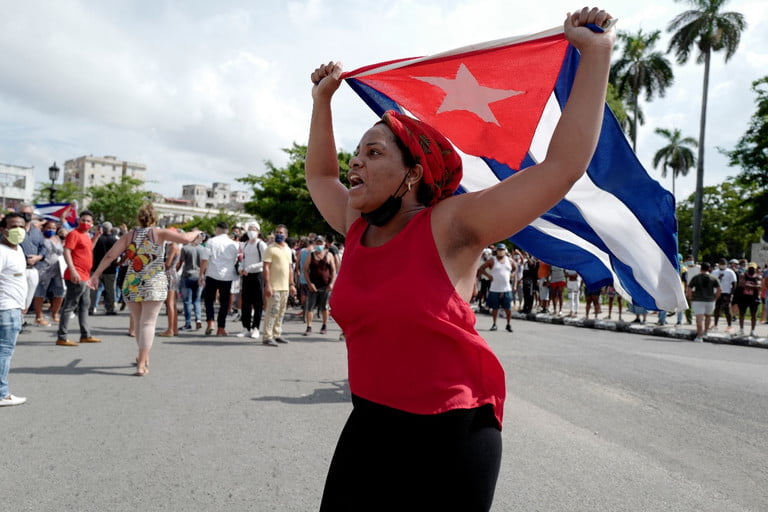
Cuba's protests would have been impossible without the Internet
Cubans access to the Internet has made the most recent anti-government protests unstoppable.
With Cubans having access to the Internet, the rules have changed. The State apparatus has lost the monopoly of its control of information. The current protests are not the first, but with a connection to the Internet, there have been demonstrations for various reasons that have not passed through the filters of the Cuban government.
Some protests have been authorized and others not, which have also been harshly repressed. While the State allowed a march against animal abuse two years ago, it later banned protests for LGBTQ+ rights or youth movements against climate change. The claims are now moved to social media.
The pro-environmental groups managed with the hashtag #trashtag to gather thousands of young people to clean the coasts and beaches of the country in March 2019. The initiative came from the students of the International School of Havana.
Then, #LaColaChallenge came in May, when Cubans shared photos of the lines they had to do to get basic products such as chicken or milk on social media. The call was spontaneous and the organization, outside State structures, was the most worrying thing for the government.
Since then, opposition activists and independent media have developed different campaigns on similar channels. The latest and most popular, the song "Patria y Vida," which has become the anthem of current protests. It turns the slogan "Patria o Muerte" (Homeland or Death) that has defined the Revolution of '59 into "Homeland and Life."
RELATED CONTENT
Its authors are artists Yotuel Romero from Orishas, Gente De Zona and Descemer Bueno, known and respected in Cuba. The song was launched in February of this year and despite criticism from the Cuban government, the song had 2 million views on YouTube in its first month.
The artists belong to the San Isidro Movement, a cultural collective that was born in 2018 to protest against the regime's censorship. The state then passed a law that prohibited artists from performing without the approval of the Ministry of Culture.
However, the Cuban government has also found a way to prosecute digital demonstrations. There have been fines for publications on social media, in addition to cuts to the Internet connection. After the massive protests these days, many activists have not been able to access their social media profiles and even encountered police surveillance at their doorstep.
None of that seems to matter anymore in the new wave of protests sweeping through Latin America that has now reached the island. The July 11 protest was the largest since the Special Period — the lean era that followed the collapse of the Soviet Union. Despite Internet censorship, the videos and photos of the demonstrations were already viral and reaching Cubans in all areas of the country.
Facebook Lives and Twitter for the hashtags are becoming fundamental. The immediacy that social media platforms allow is difficult to limit and those who protest know it. However, they are also the breeding ground for misinformation.
Under the hashtag #SOSCuba, thousands of Twitter accounts were created in just two days that used an automated retweet system to share thousands of tweets in record time. But would the world have known the magnitude of the events without them?











LEAVE A COMMENT: